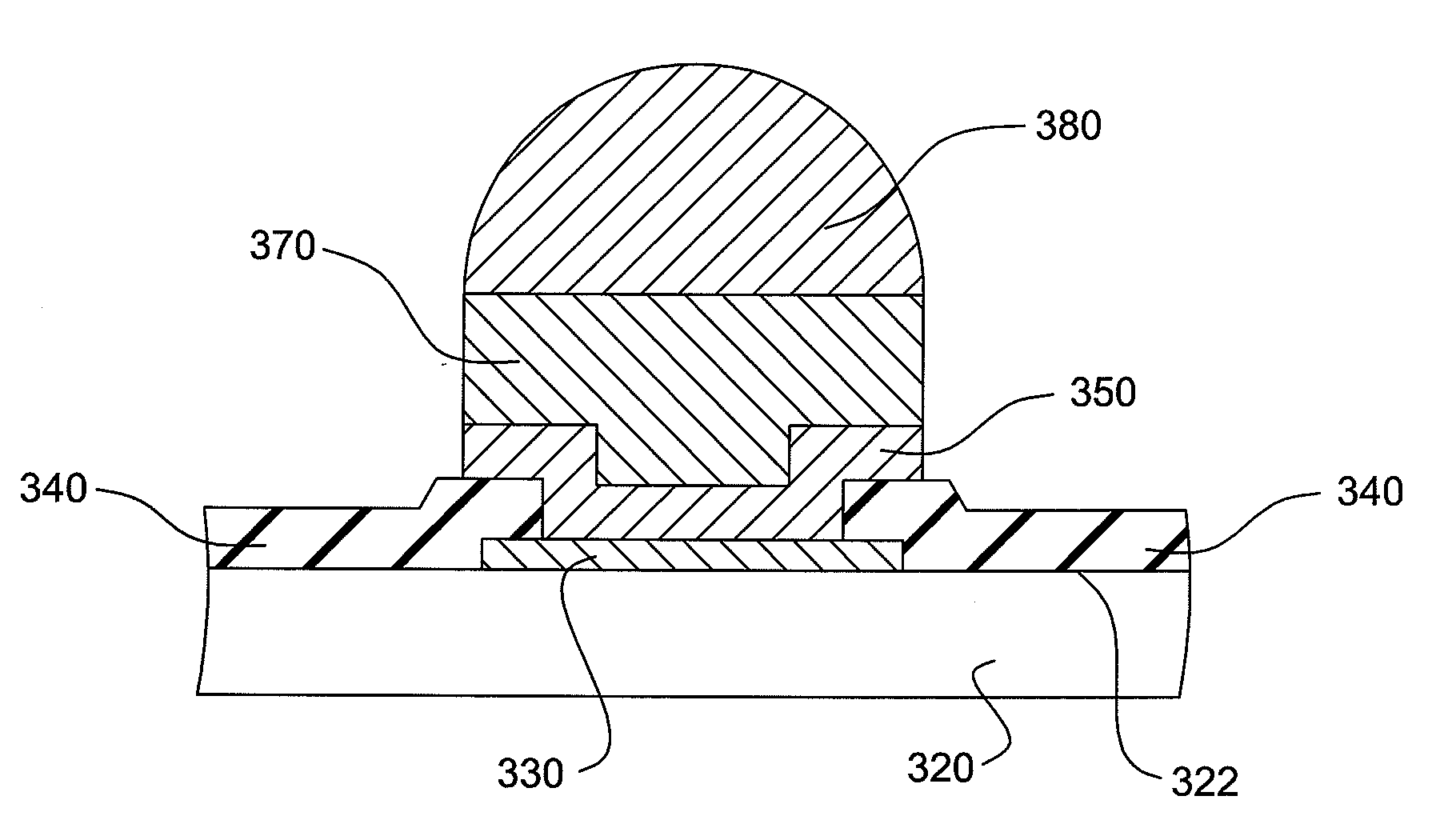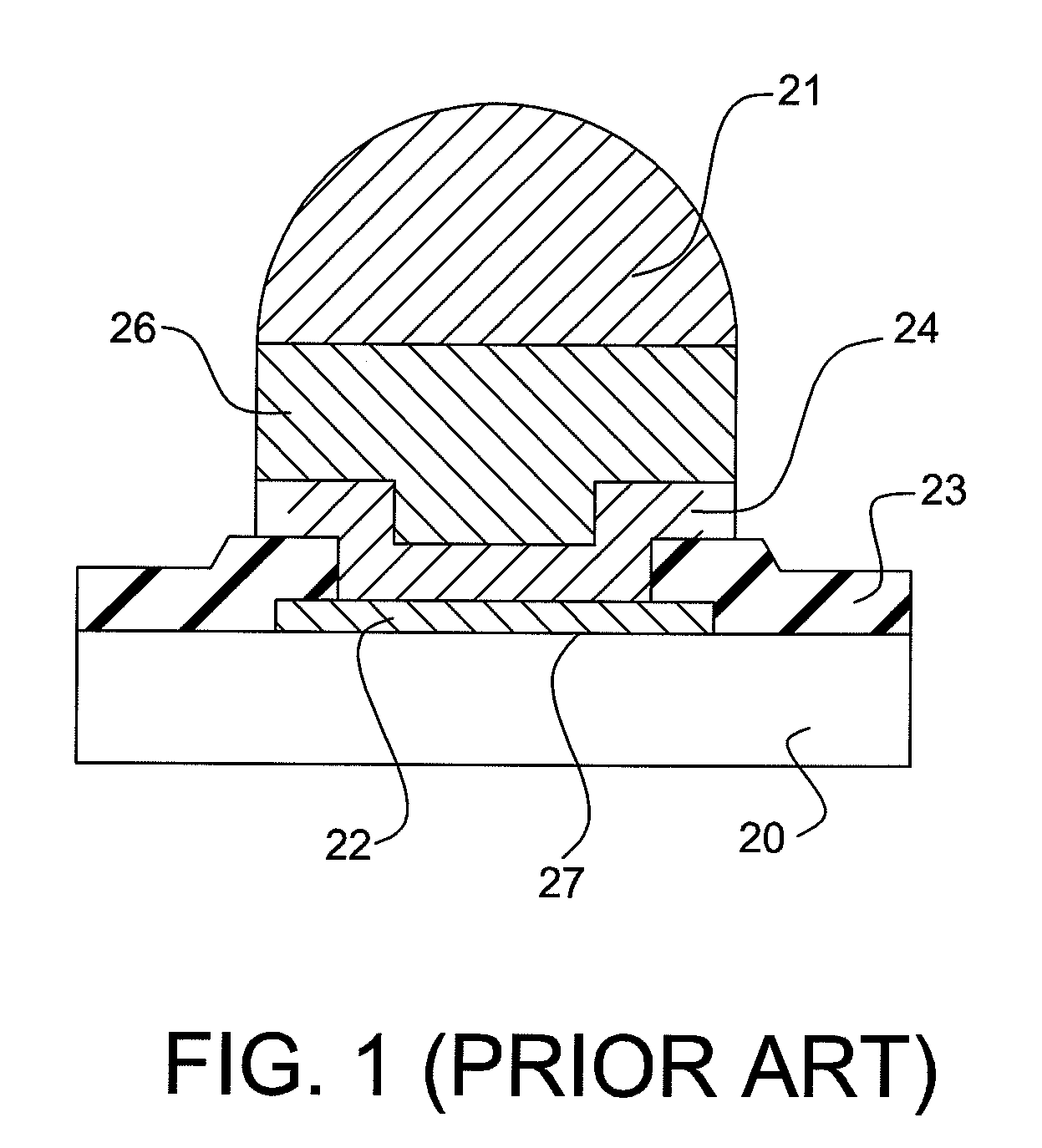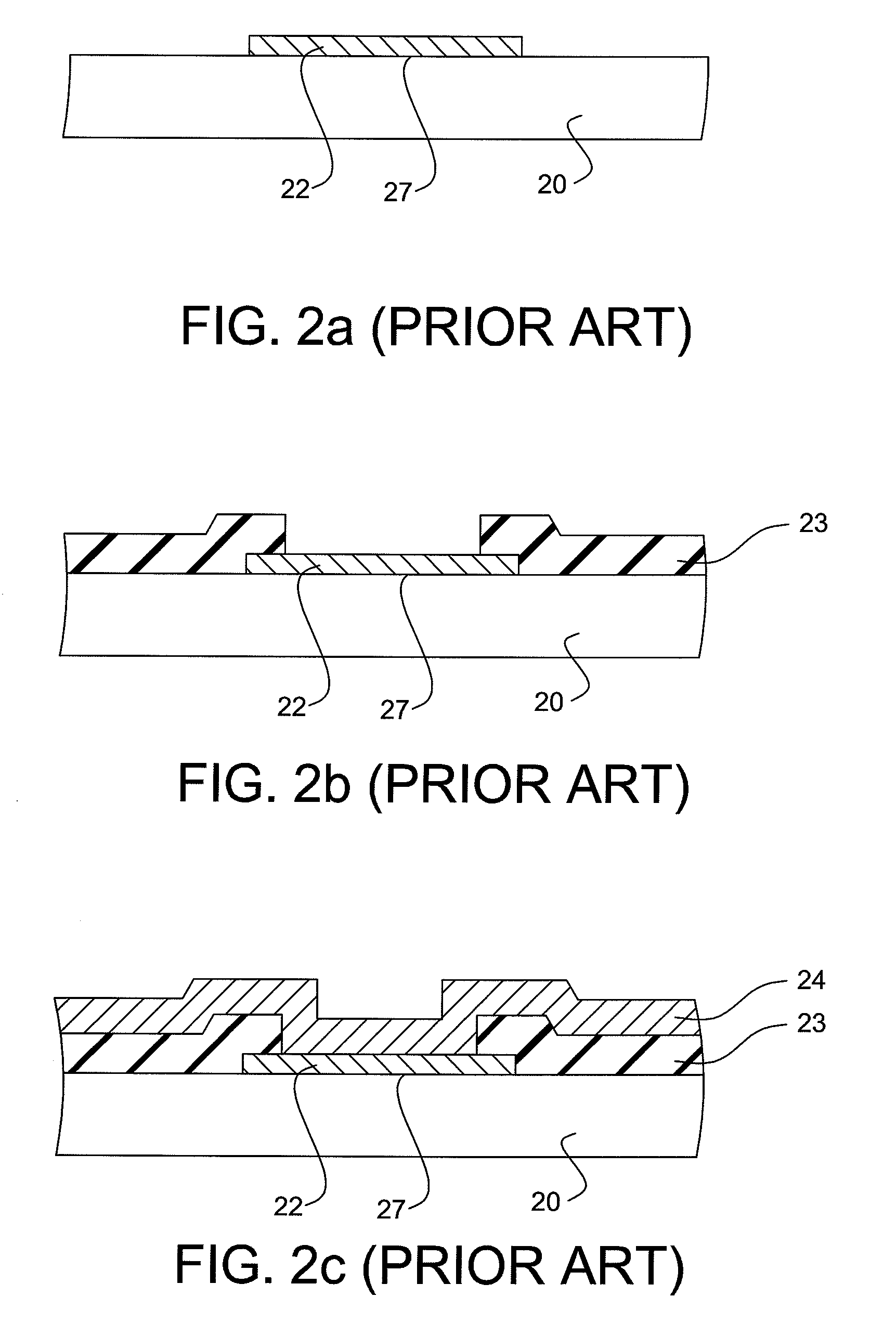Method for forming bumps on under bump metallurgy
- Summary
- Abstract
- Description
- Claims
- Application Information
AI Technical Summary
Benefits of technology
Problems solved by technology
Method used
Image
Examples
Embodiment Construction
[0018]Referring to FIGS. 3a to 3g, the method for forming metal bumps according to the present invention is to form a bonding pad 330 on the active surface 322 of a chip 320 (see FIG. 3a). A passivation layer 340 is then formed on the active surface 322 of the chip 320 and exposes the bonding-pad 330 (see FIG. 3b). Afterward an under bump metallurgy 350 is formed on the active surface 322 of the chip 320 to overlay the bonding pad 330. The under bump metallurgy 350 is made of a material selected from a group consisting of titanium, alloy of titanium and tungsten, copper, nickel, alloy of chromium and copper, alloy of nickel and vanadium, alloy of nickel and gold, aluminum and combination thereof (see FIG. 3c). A layer of patterned photoresist 360 is formed on the under bump metallurgy 350 and exposes the portion of the under bump metallurgy 350 on the bonding pad 330 (see FIG. 3d). A layer of metal 370, such as copper is plated on the exposed portion of the under bump metallurgy 350...
PUM
 Login to View More
Login to View More Abstract
Description
Claims
Application Information
 Login to View More
Login to View More - R&D
- Intellectual Property
- Life Sciences
- Materials
- Tech Scout
- Unparalleled Data Quality
- Higher Quality Content
- 60% Fewer Hallucinations
Browse by: Latest US Patents, China's latest patents, Technical Efficacy Thesaurus, Application Domain, Technology Topic, Popular Technical Reports.
© 2025 PatSnap. All rights reserved.Legal|Privacy policy|Modern Slavery Act Transparency Statement|Sitemap|About US| Contact US: help@patsnap.com



